 It’s great to have people cheering for you.
It’s great to have people cheering for you.
But the number of fans you accumulate is valueless if you’re not the first one standing in line.
LESSON LEARNED: You need to be your own biggest fan.
Aka:
Your own best friend.
Your own ideal reader.
Your own top customer.
Your own perfect audience.
Your own greatest supporter.
From that space of self-belief, anything is possible.
Because whatever your currency is – making a statement, making difference, making a mint – you can’t earn that unless you have people cheering for you.
You may as well start with yourself.
Here’s a list of six ways to be your own biggest fan without resorting to face painting, binge drinking or crowd surfing:
1. Steel yourself against the thundering noise around you. Don’t let the validity of your talent hang in the balance of some wanker critic’s opinion. Instead, give up your obsessive need for approval from anyone other than yourself.
Develop personal standards for judging your own artistic talents. Visualize at the onset what a win looks like. That way, when the bedlam persists from the haters around you, the commotion dissolves from the groupie inside you.
Remember: As long as you’re your own biggest fan, you win every time. Unless you’re a serial killer. That’s totally different. I don’t care how skilled you are at decapitating people. How much of what you believe about yourself comes from what others believe about you?
2. Extend unrestricted mental hospitality to every achievement. Self-confidence comes from self-evidence. Here’s my suggestion: With every victory – regardless of size – constantly remind yourself: This is not a trivial accomplishment.
Personally, I keep a Victory Log. Been making entries every morning since 2002. From profitable business achievements like, “Landed a huge consulting contract!” to smaller personal triumphs like, “Didn’t pass out from massive dehydration in yoga class today.”
Hey man, a win is a win. I’m reminded of what Seneca wrote in Letters to a Stoic: “Call to mind things that you have done that have been upright or courageous; run over in your mind the finest parts that you have played.”
This provides you with a secure base – a context of sufficiency coupled with an attitude of self-confidence – from which to operate. That’s how you win, and keep winning. What victories did you memorialize today?
3. Regularly audit your self-belief. It is possible to be your own fan without believing your own in house press. As long as you digest proper doses of self-awareness and humility.
To become (not only) your biggest fan – but also your sharpest fan – consider asking yourself a few questions:
*What obsolete self-beliefs are trapping you? Because certain values you’ve held close to your heart will eventually outlive their usefulness.
*What would it take for you to believe in yourself down to your toes? Because the more you belittle your true self, the more your inner gifts atrophy.
*Which beliefs should you abort? Because some of those ideals may not be serving your goals any longer.
Remember: Being your own biggest fan is how you prepare the soil from which a harvest of meaningfulness grows. But only if you’re radically honest with yourself first. Why do you believe in yourself?
4. Smash through self-doubt. Like a sledgehammer through an Easter egg. Otherwise you short-circuit your momentum. And he who takes no action makes no money.
My question is: Why take up unnecessary mental disk space questioning yourself? Limits are for calculus teachers. Yes, you are the detonator of your own destruction – but you’re also the conductor of your own self-belief.
To free yourself from the fear of being found out, recite the following affirmation: “I am the person who can do this … I am the person who can do this.” I use that one all the time. And it’s a great tool when I need help convincing myself that I actually know what the hell I’m doing.
Otherwise self-doubt becomes the ultimate self-betrayal. Therefore: Your mission is to keep the faith. Like the diehard fan that refuses to leave the half-empty ballpark until the last pitch is thrown, stick with yourself.
And if you throw a hanging curve that gets tattooed out of the stadium, so be it. Learn from it and move on. How often do self-doubt and caution take hold of your decision making process?
5. Success alone is not enough to anchor you. First, you have to embody the unshakable, unbending belief that you deserve success. That it’s yours for the asking. Not that you’re entitled to success – but that you’re good enough to receive it.
My suggestion: Cure the waves of whoami. Remind yourself that who you already are – is enough to get what you want. You are worthy of this dream, and this dream is worthy of you. Otherwise you’ll never rein superior to the wounds and upsets of life.
As Karen Salmonshon wrote in Enough, Damn It! “Lots of pessimism will only get you lots of opportunity to be right about your pessimism. Don’t be a pessimist who succeeds at being right about being a pessimist.” Are you shaping your world or being shaped by it?
6. Stick around anyway.. Even when it’s late. Even when you’re tired. Even when it’s raining outside. Even when you’re sitting in the nosebleed section because your friend who got the tickets is a total tight ass.
That’s what real fans do: They pull on their ponchos and wait the out the storm. Even when nobody notices. Because it’s not about being noticed – it’s about being dedicated.
Fans like these came to see a performance and, damn it, that’s exactly what they’re going to get. And maybe some nachos. Your challenge is not to let the breaks break you. To relentlessly pursue an upward course, crappy conditions notwithstanding.
For example: When you discover that not everybody cares about you, be your biggest fan anyway. When you learn that not everybody is invested in your success, be your biggest fan anyway. And when you realize that not everybody will notice when you fail, be your biggest fan anyway.
Like Garrison Keilor said when I saw a live 2008 episode of Prairie Home Companion, “Never, ever give up. Because when you do, most of the world probably won’t notice anyway.” How are you building your resiliency?
HERE’S THE REALITY: You don’t need millions Twitter followers, thousands of Facebook friends or hundreds of LinkedIn connections to have fans that matter.
Start with you.
Become your own biggest fan first.
Before selling yourself to the world, invest the proper time selling yourself to yourself.
Because unless you believe in yourself more than anybody else on the planet, your career will be a pointless, empty journey.
Gooooooooooal!
LET ME ASK YA THIS…
Are you cheering for yourself?
LET ME SUGGEST THIS…
For the list called, “35 Things You Simply Can’t Do,” send an email to me, and you win the list for free!
* * * *
Scott Ginsberg
That Guy with the Nametag
Author, Speaker, Entrepreneur, Mentor
[email protected]
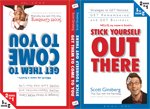 The world’s FIRST two-in-one, flip-flop book!
The world’s FIRST two-in-one, flip-flop book!
Buy Scott’s comprehensive marketing guidebook on Amazon.com and learn how to GET noticed, GET remembered and GET business!

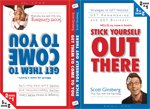 The world’s FIRST two-in-one, flip-flop book!
The world’s FIRST two-in-one, flip-flop book! Public schools should teach evolution.
Public schools should teach evolution.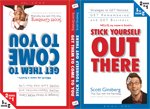 The world’s FIRST two-in-one, flip-flop book!
The world’s FIRST two-in-one, flip-flop book! To execute is to put to death.
To execute is to put to death.
 The world’s FIRST two-in-one, flip-flop book!
The world’s FIRST two-in-one, flip-flop book! If you’re not polarizing, you’re not monetizing.
If you’re not polarizing, you’re not monetizing. Execution isn’t a hobby.
Execution isn’t a hobby.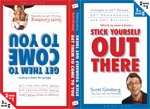 The world’s FIRST two-in-one, flip-flop book!
The world’s FIRST two-in-one, flip-flop book!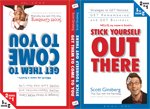 The world’s FIRST two-in-one, flip-flop book!
The world’s FIRST two-in-one, flip-flop book! Determination alone fails.
Determination alone fails. 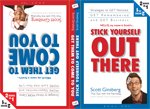 The world’s FIRST two-in-one, flip-flop book!
The world’s FIRST two-in-one, flip-flop book! I’m not an angry person.
I’m not an angry person.